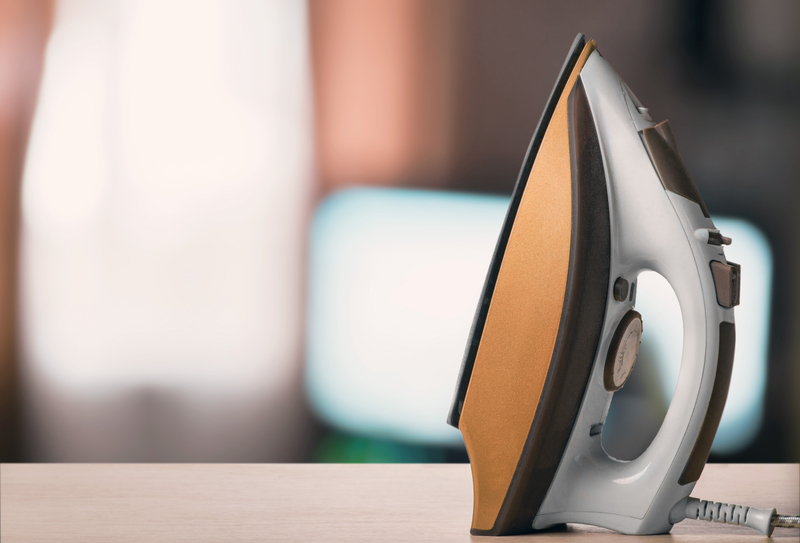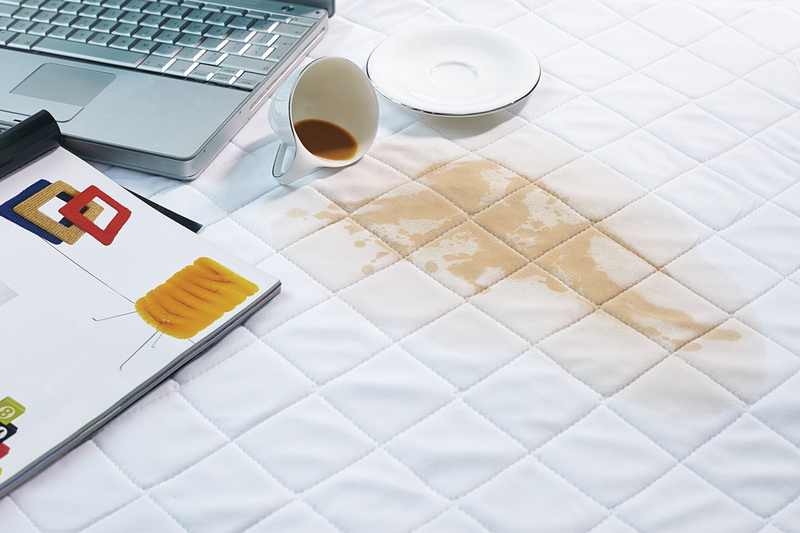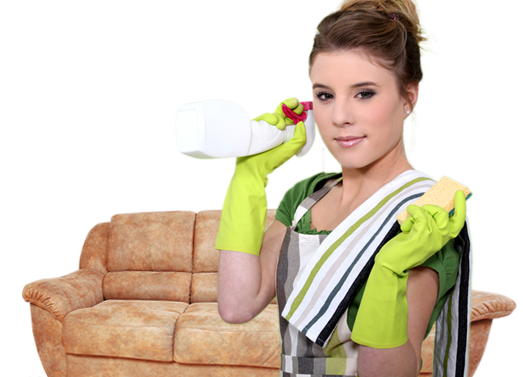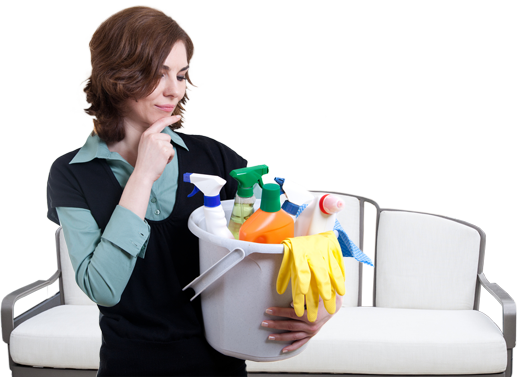Rejuvenate Your Kitchen with a Clean, Burnt-free Stovetop
Posted on 22/05/2025
Rejuvenate Your Kitchen with a Clean, Burnt-free Stovetop
A sparkling, burnt-free stovetop is not just an aesthetic goal--it's the secret ingredient to a refreshing kitchen and a joyful cooking experience. In this comprehensive guide, explore how to revitalize your kitchen by achieving and maintaining a spotless, burnt-free stovetop. Unlock professional cleaning techniques, top products, and simple habits for lasting results. Whether you own a gas, electric, ceramic, or induction cooktop, you'll discover everything you need to rejuvenate your kitchen with a gleaming, inviting stove.
Why a Clean, Burnt-Free Stovetop Matters
Your stovetop is the heart of your culinary space. A burnt-on mess can not only diminish your kitchen's charm, it can also:
- Impair cooking efficiency by blocking heat distribution
- Interfere with flavors due to lingering residues and odors
- Reduce the lifespan of your stovetop and cookware
- Attract pests and foster a breeding ground for bacteria
- Increase fire risks if burnt food accumulates
With so much at stake, it's easy to see why investing in a burnt-free, shiny stove is truly a form of kitchen rejuvenation!

Understanding Stovetop Surfaces
Each type of stovetop--gas, electric coil, glass, induction--comes with its unique cleaning requirements. Recognizing your stove's material ensures safe and effective cleaning without causing scratches or damage.
Gas & Electric Coil Tops
- Removable grates and coils: Clean separately for best results
- Metal surface: Responds well to degreasers and scrubbing pads
Glass & Ceramic Tops
- Requires gentler cleaning: Avoid abrasive pads or powders
- Specialized glass cooktop cleaners recommended
Induction Cooktops
- Smooth, flat surface: Similar to glass or ceramic
- Needs soft cloths and non-scratch sponges
The Science Behind Burnt-on Stains
Cooking spills, splatters, and boil-overs can leave behind stubborn residues. As heat continues, these residues harden into burnt-on stains that resist standard cleaning. Sugars caramelize, proteins denature, and fats polymerize, bonding with the surface. That's why a damp cloth alone won't restore your kitchen's stovetop to its glory.
How to Remove Burnt-on Stains from Different Stovetop Types
Gas Stove Cleaning
- Remove grates and burner caps. Soak them in hot, soapy water for 15-20 minutes. Use a stiff brush or non-abrasive scrubber to dislodge stubborn residues.
- For hardened burnt spots on the stovetop surface, apply a paste of baking soda and water. Let sit for 10 minutes, then scrub gently with a soft pad or old toothbrush.
- Use a degreasing spray on oily stains, and follow up with a microfiber cloth for a shining finish.
Electric Coil Stove Cleaning
- Unplug coils before cleaning. If spillages have burnt onto the coils, wipe down with a damp cloth after the element has cooled completely. For persistent burnt spots, use white vinegar, rubbing gently.
- For reflector pans, remove and soak in baking soda solution, then scrub off buildup for a burn-free look.
Glass & Ceramic Stovetop Cleaning
- Wait until the stovetop is completely cool.
- Sprinkle baking soda directly onto stains. Place a warm, damp towel over the area for 15-30 minutes.
- Gently scrape off residue with a plastic scraper or spatula--never use metal!
- Apply a drop of specialized glass cooktop cleaner, and buff to a mirror-like shine with a soft cloth.
Induction Cooktop Cleaning
- Most induction cooktops share the same cleaning process as glass or ceramic surfaces.
- For burnt-on splashes, a mix of baking soda and white vinegar often works wonders.
Step-By-Step Guide for a Spotless, Burnt-Free Stovetop
Step 1: Gather Your Supplies
- Baking soda
- White vinegar
- Mild dish soap
- Soft sponge or microfiber cloth
- Old toothbrush
- Plastic scraper
- Specialty stovetop cleaner (for glass/ceramic/induction)
- Degreaser (for heavy-duty messes)
Step 2: Safety First
Always ensure your stovetop is cool and switched off before beginning any cleaning process. For electric stoves, unplug the burner coils for extra safety. Wear gloves to protect your skin from harsh cleaners and burnt residues.
Step 3: Remove and Soak Parts
On gas and electric coil stoves, remove grates, burner caps, and drip pans. Soak these in hot, soapy water, or add a capful of white vinegar for enhanced degreasing power. This loosens burnt food and makes scrubbing easier.
Step 4: Tackle the Surface
Wipe away loose crumbs and debris with a dry cloth. For burnt-on patches, generously sprinkle baking soda directly onto stains and drizzle with vinegar. Allow the foaming reaction to penetrate the mess for at least 10-15 minutes.
- For glass/ceramic/induction tops, cover the mixture with a warm, damp towel and wait another 10-15 minutes to soften stubborn marks.
Step 5: Scrub and Wipe
- Use a non-scratch sponge, cloth, or plastic scraper for all cooktops.
- Scour gently in circular motions, working from the outside in to avoid spreading grime.
- Wipe the area clean with a damp microfiber cloth, then polish with a dry one for streak-free shine.
Step 6: Deep Cleaning for Toughest Stains
- If burnt residue remains, repeat the baking soda and vinegar method, or use a specialty stovetop cleaner according to the manufacturer's directions.
- For gas caps and grates, you may need a stronger degreaser or a paste of baking soda and hydrogen peroxide.
Step 7: Reassemble and Admire
- Dry all parts thoroughly to prevent rust or water spots.
- Reassemble your stovetop, stepping back to admire your refreshed, burnt-free stove!
Natural Solutions for a Burnt-free Hob
Baking Soda: The Powerhouse Cleaner
Baking soda's mild abrasiveness makes it ideal for scrubbing off stubborn, burnt-on gunk while being gentle enough for delicate surfaces.
White Vinegar: The Grease-Cutter
White vinegar not only dissolves grease but also neutralizes odors--leaving your kitchen feeling as fresh as it looks.
Lemon Juice: Brightening Cleanser
The natural acidity of lemon juice can cut through stains and impart a clean, citrusy aroma to your stovetop.
Hydrogen Peroxide: Heavy-Duty Stain Remover
Mix with baking soda for the toughest, deeply-burnt spills; let it fizz, then wipe clean.
Preventative Habits for a Burnt-free Kitchen Stovetop
Prevention is the ultimate path to an effortlessly clean stovetop. Adopt these simple practices:
- Wipe up spills immediately before they harden.
- Use burner liners for gas and electric coil stoves--they catch drips and can be replaced regularly.
- Set a weekly stovetop cleaning routine to avoid buildup.
- Use pots and pans of the correct size to prevent boil-overs.
- Avoid abrasive cleaners that can scratch and damage the surface, making future stains harder to remove.
Expert-Level Finishing Touches for a Truly Rejuvenated Kitchen
- Polish with a few drops of olive oil (for gas or metal tops, not for glass/ceramic) to repel future smudges and create a mirror-like finish.
- Disinfect knobs and controls with a solution of vinegar and water for a complete clean.
- Freshen the air by simmering lemon slices or cinnamon sticks on your newly cleaned stovetop.
Bonus: Organize and Declutter Around Your Clean Stove
Once your stovetop gleams, don't underestimate the visual impact of an organized cooking space. Store utensils, pots, and ingredients nearby, but keep the area directly around your stove clear. This not only enhances safety, but it also lets your immaculate, burnt-free cooktop take center stage as a symbol of your kitchen's transformation.
Choosing the Right Cleaning Products for Your Stovetop
With a dizzying array of cleaning products on the market, selecting the right one is essential for rejuvenating your stovetop without damaging it.
For Gas and Electric Coil Stoves
- Multi-surface degreasers: Effective for heavy oil and grease
- Non-abrasive cream cleaners: Safe for most metal surfaces
For Glass, Ceramic, and Induction Stovetops
- Specialty glass cooktop cleaners: Designed to clean without scratching or leaving residue
- Microfiber cloths: Leave no lint or streaks behind
Eco-friendly Cleaning for a Sustainable, Burnt-free Kitchen
Making your kitchen greener doesn't mean settling for less cleanliness. Many plant-based, biodegradable solutions rival their chemical counterparts. Look for:
- Citrus-based degreasers (smell fantastic!)
- Baking soda and vinegar blends
- Reusable cleaning pads and cloths

Frequently Asked Questions About Burnt-free Stovetop Cleaning
How often should I deep clean my stovetop?
Deep cleaning once a week is ideal, with quick daily wipe-downs after cooking to keep it burnt-free.
Can I use steel wool on my stovetop?
No! Steel wool is too abrasive for most stove surfaces and can cause scratches, especially on glass or ceramic tops.
What if I have a particularly stubborn scorch mark?
Try multiple cycles of baking soda and vinegar paste, or use a specialty cooktop scraper. For old, thick burnt spots, soften residues with repeated towel soaks and gentle scraping.
Do burner liners make a difference?
Yes, burner liners catch drips and prevent food from burning onto electric and gas stoves, making routine cleaning a breeze.
Your Burnt-free, Beautiful Stovetop Awaits
A clean, burnt-free stovetop doesn't just improve your kitchen's appearance--it also boosts efficiency, hygiene, and morale in the heart of your home. By following these expert tips, natural cleaners, and easy routines, you can reclaim the satisfaction and inspiration that comes from cooking on an immaculate stove.
So roll up your sleeves, gather your supplies, and rejuvenate your kitchen today by transforming your stovetop from grimy and burnt to gleaming and inviting. Not only will your kitchen look renewed, but your cooking experience will be safer, easier, and far more enjoyable. Happy cleaning!
```




